You might think that lug nuts are lug nuts. The reality is that there are a lot of different lug nut types. You can’t just toss a set of OE-style acorn nuts on a set of Cragars and expect them to stay on the car.
Most OEM lug nuts are not designed to work with aftermarket wheels.
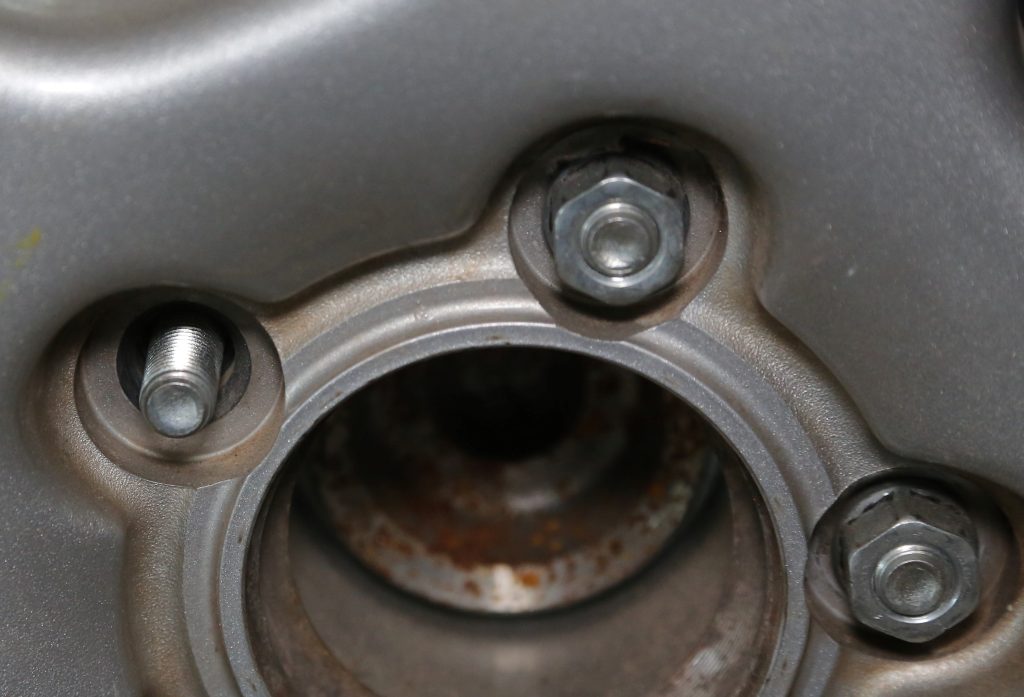
Replacing the lug nuts on OE wheels is not a bad idea either—especially if you drive a GM product with those terrible capped lug nuts. These have with a chrome cap made of thin steel that have a bad habit of swelling and stripping off the lug nut itself. That makes them very difficult to remove, especially on the side of the road.
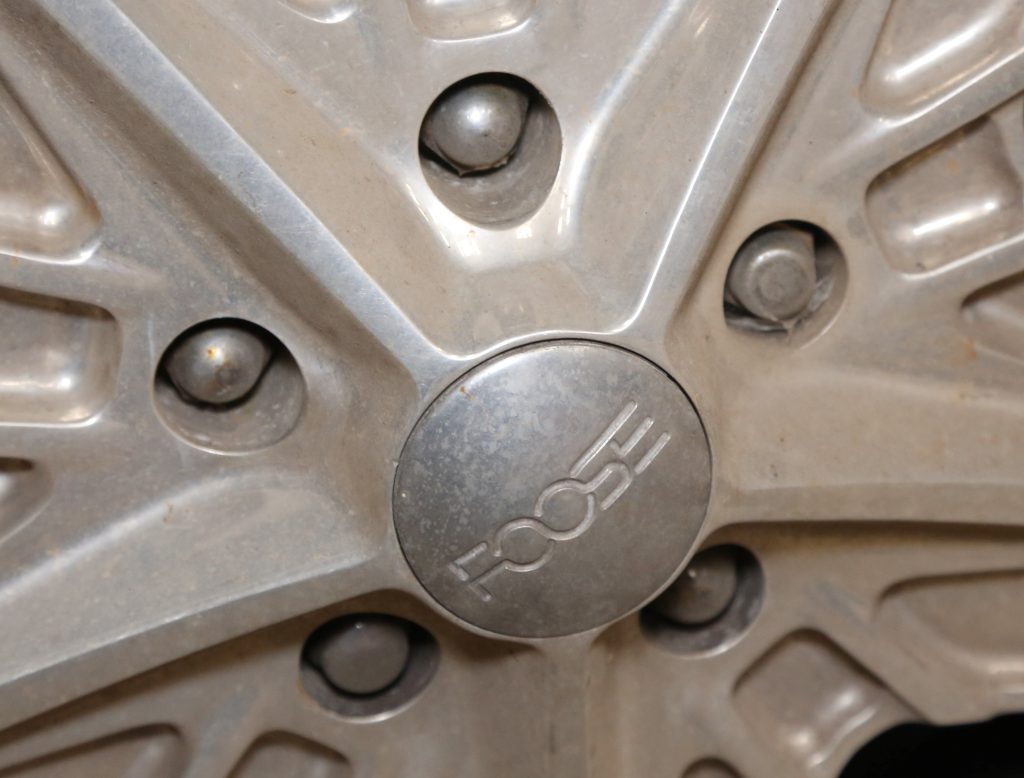
Understanding Different Lug Nut Styles
The most important question is “what type of lug nut do my wheels require?”
The three most common types are cone (also called acorn nuts), shank (also called mag nuts), and lug bolts.
- Cone lug nuts are the most common type. They have a conical head on the wheel side of the nut with a taper that mates to the tapered flange on the wheel. The cone centers the wheel to the hub when you tighten the nut. This ensures that the wheel is mounted correctly and isn’t offset to the centerline of the hub.
- Shank lug nuts have a long shaft that goes inside the wheel flange. Instead of a cone, the shank centers the wheel to the hub. Shank lug nuts require a special washer, which usually has an inner and outer side that must be oriented correctly. There are various shank lengths to match the wheels you use. Don’t assume all shank-style lug nuts are the same, even if they are the same thread.
- Lug bolts are technically not nuts. They are wheel lugs that thread into the wheel hub and center the wheel like a cone or acorn nut. Lug bolts were popular prior to the 1960s and are still used on some European cars.
There are other, less common styles of lug nuts as well:
- Ball seat lug nuts are found on Porsche and Volkswagen vehicles as well as some Honda and Audi vehicles. They have wide rounded ball flange that centers the wheel to the hub. They DO NOT interchange with cone nuts.
- Flat seat lug nuts have no shank or cone, just a flat flange head with a washer. These can be found on some Ford trucks.
- Extended thread lug nuts are mainly for specialty aftermarket wheels that require an extended-thread nut. They have a short shank of threads with conical taper on the outside.
- Knock-offs are technically more of a retainer than a lug nut. They are a large single spinner on the hub that is “knocked off” with a wood, lead, or rubber mallet. Vintage British sports cars and C2 Corvettes use knock-offs instead of lug nuts.
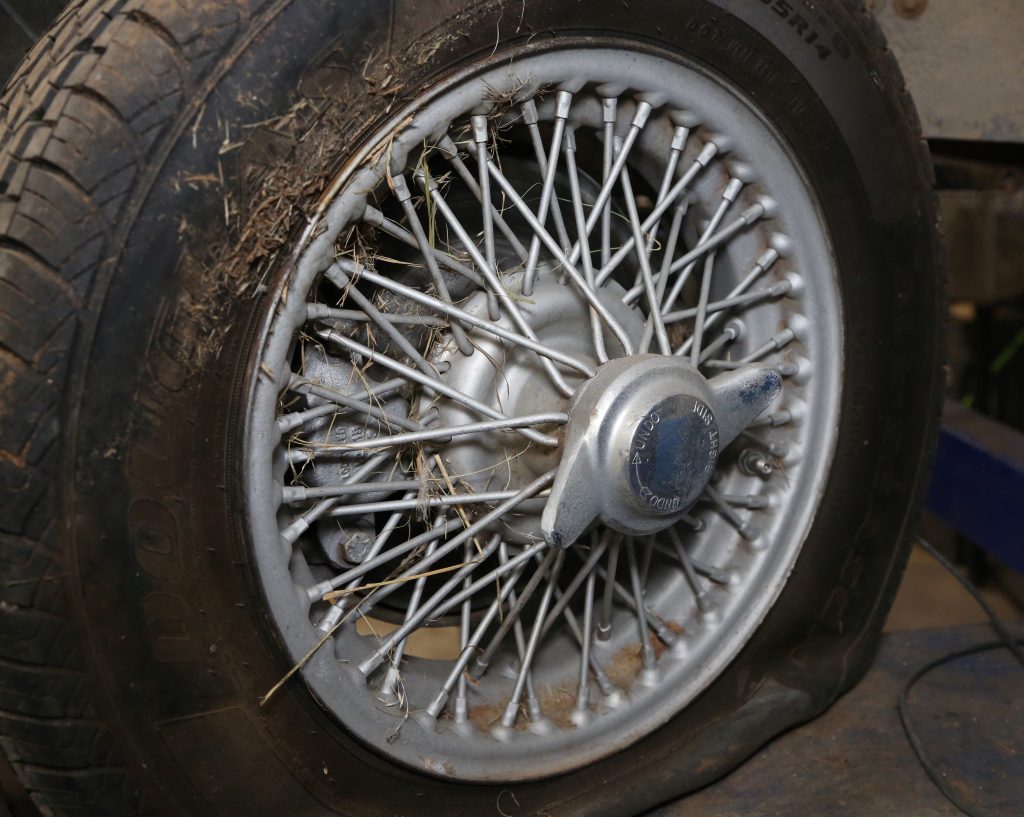
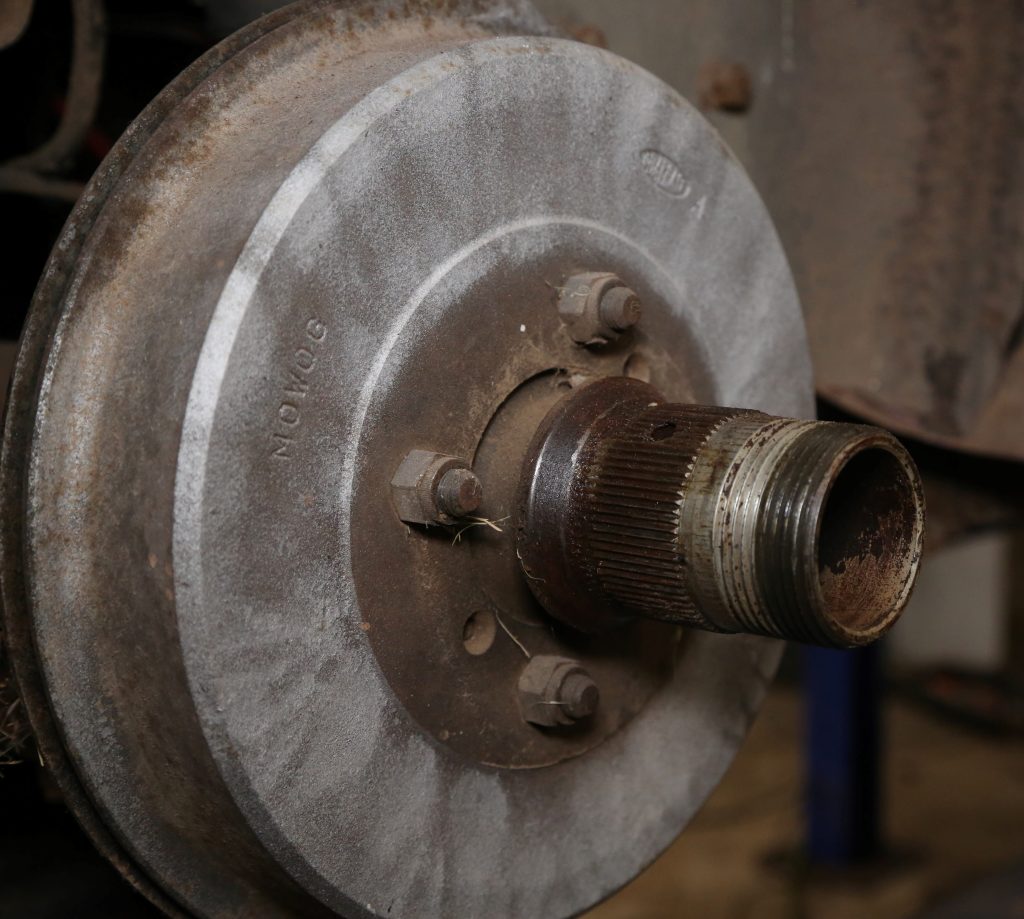
Determining Proper Lug Nut Size
There is no universal size for wheel lug threads. You need to verify the lug threads on your vehicle before you buy new lug nuts. You can do that with a thread pitch gauge. Sometimes the thread is noted on the lug nut itself, but don’t count on it.
Most vehicles made after the mid-1990s use metric threads. Upgrading to aftermarket brakes and axles can change that. In fact, any axle, wheel hub, or brake rotor upgrade can change lug thread pitch and diameter. It is not uncommon for a builder to use a front disc brake conversion that requires metric 12mm x 1.75 lug nuts while the rears retain the OEM 7/16″-20 nuts. That means you need to buy two different sizes.
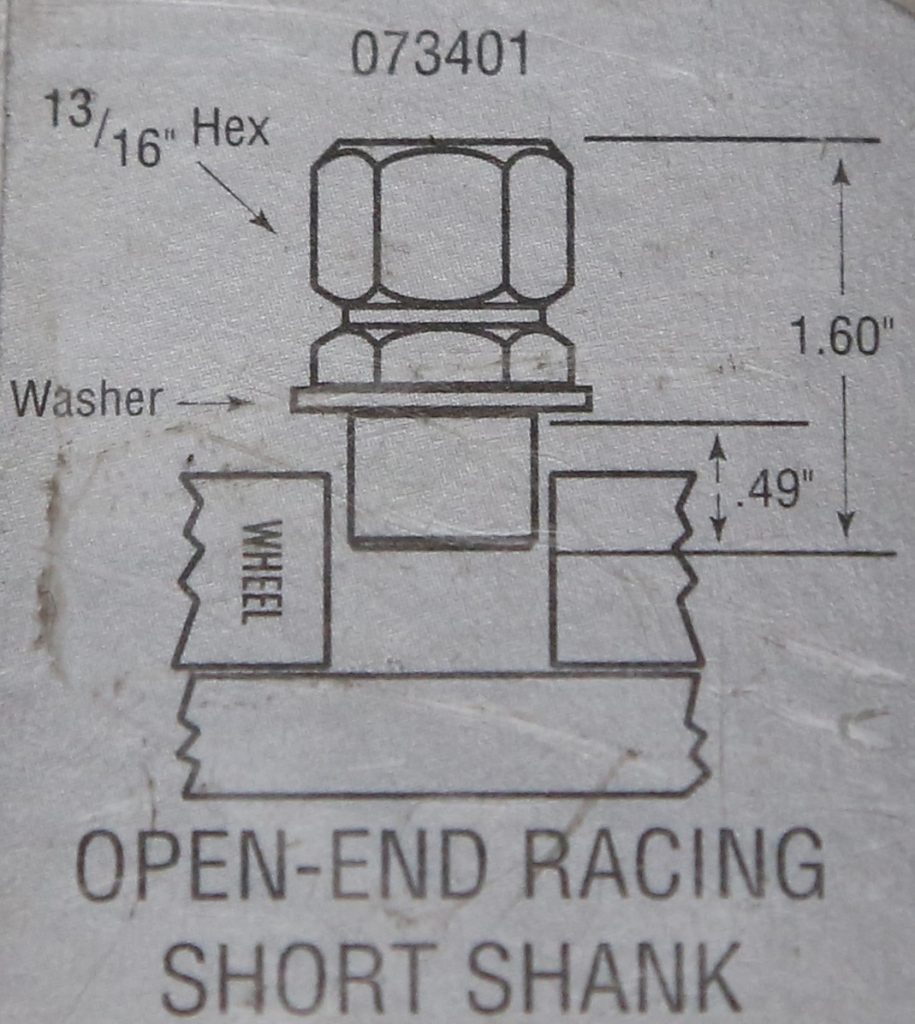
Most lug nuts are fine thread. SAE threads are typically 7/16″-20, 1/2″-20, or 9/16″-18. Metric fasteners have multiple thread pitch options, so you have to pay attention. Common metric lug nut sizes are:
- 10mm X 1.25
- 12mm X 1.25
- 12mm X 1.50
- 12mm X 1.75
- 14mm X 1.25
- 14mm X 1.50
- 14mm X 2.00
IMPORTANT! A metric nut will start on an SAE thread and vice versa. But if you use an impact to install them, you might not notice that you stripped the lug threads until it’s too late. Then you’ll need new wheel lugs, too.
Don’t forget about left-hand threaded lug nuts. Many cars built up to the mid-1960s—we’re looking at you, Chrysler—used left- and right-hand threaded wheel lugs. Left-hand thread lug nuts are always marked with an L or LH to indicate such. If you try to remove a left-hand thread lug nut with an impact like it’s a regular right-hand thread one, you’ll be replacing a wheel lug.
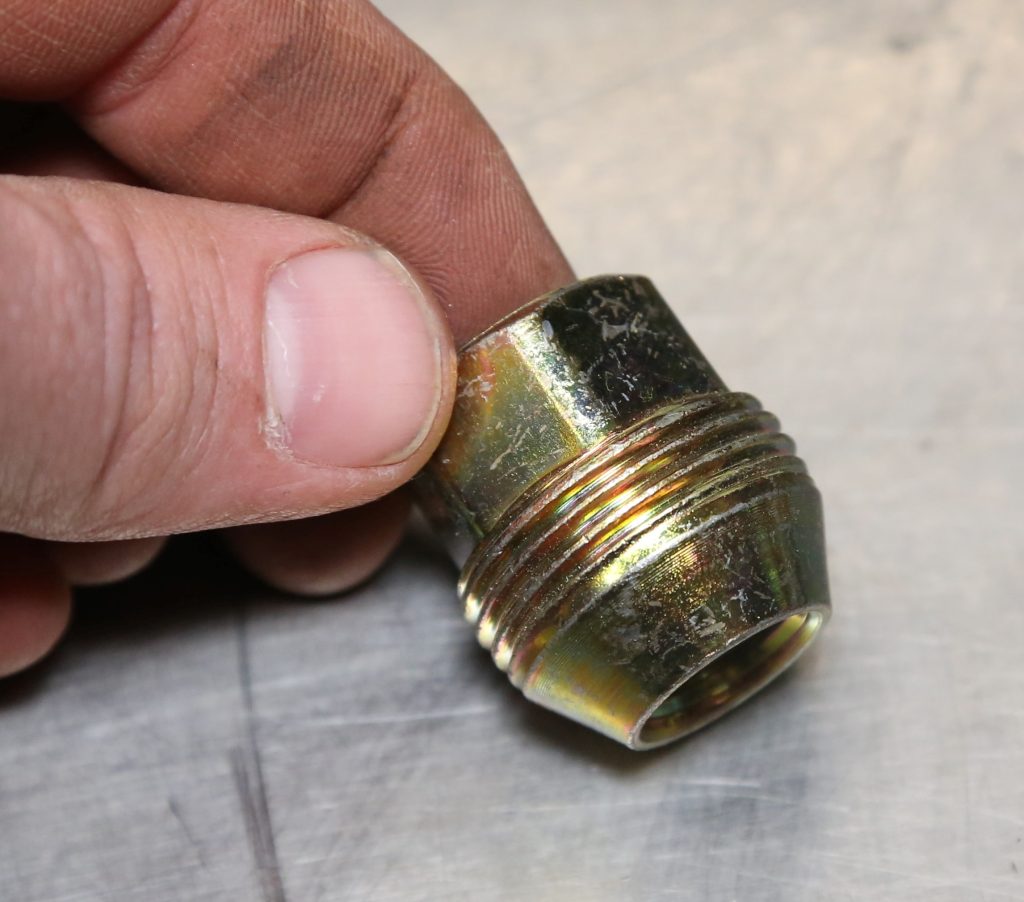
Other Considerations for Choosing the Best Lug Nuts
There is more to lug nuts than just style and size. Do you have a race car with extra-long studs? You need pass-thru lug nuts. Want to keep your expensive hoops safe from thieves? Locking lug nuts can help.
Many wheel makers minimize the space for the lug nuts, requiring the use of special ones like spline drive nuts. If you need specialty lug nuts, Summit Racing has every lug nut type you could ever need.
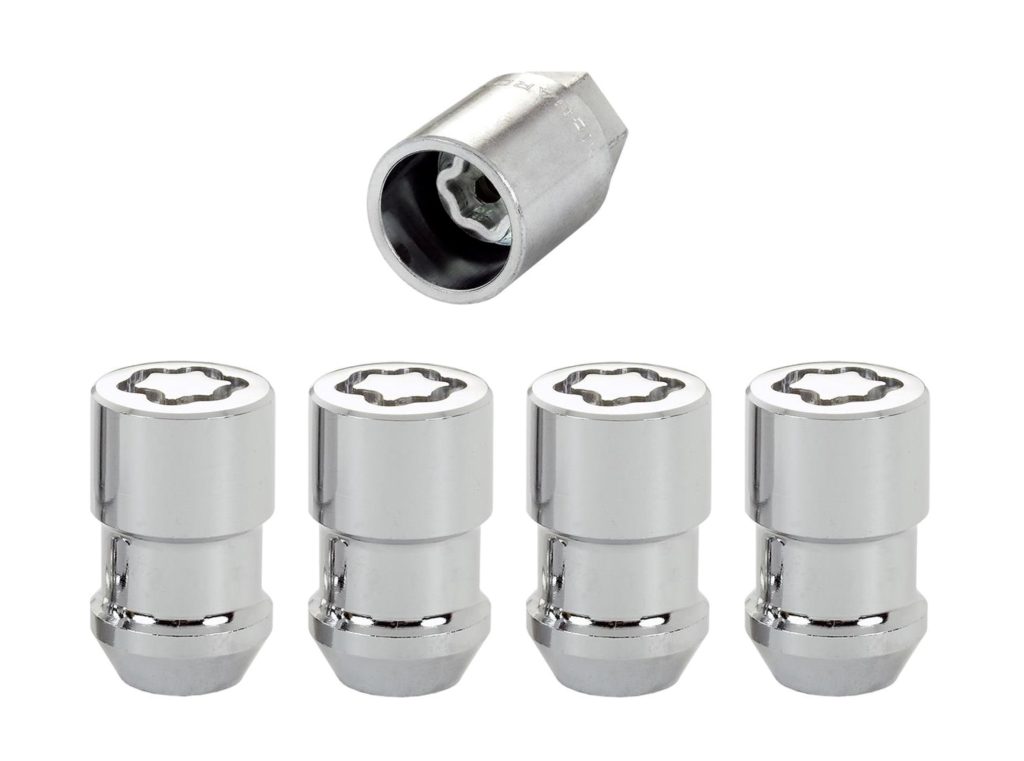
Proper Lug Nut Installation & Removal
Lug nuts and bolts should always be installed dry. That means absolutely no anti-seize, lubricant, oil, or penetrating oil. You want nothing but clean, dry metal. Always make sure you have the threads started correctly. One way to do this is to spin the nut backwards on the lug until it settles in place, then thread it on correctly. This aligns the threads so the nut goes on straight.
Thread depth is an often-ignored factor, but it is critical to a safe installation. The minimum thread engagement on a lug nut (or any nut for that matter) is the same as the width of the bolt. For example, a 12mm lug nut must thread onto the bolt a minimum of 12mm. If your lug nuts are blind (can’t see the wheel stud once installed), then you need to measure. Sometimes they can be eyeballed—but if it is questionable, get out the tape measure.
Don’t tighten a single lug nut until all of them are threaded to the wheel lugs. You want to tighten the lug nuts in three stages—hand-tight, wrench-tight, then torqued to spec with the weight of the vehicle on the wheels. This ensures that the wheel is centered and loaded for a proper torque value. Make sure that you use a crisscross pattern to tighten and torque the nuts for proper load distribution.
While many people (and shops) use an impact gun to tighten lug nuts, there are actual torque specs that should be followed. Nice and tight is good enough when on the side of the road, but when you’re the shop, take the extra five minutes to properly torque your lug nuts. The actual torque spec is listed in your vehicle’s owners manual, but here is a list of generic torque specs based on thread size:
General Fastener Torque Specs Based on Thread Size
| Thread Size | General Torque Spec |
|---|---|
| 12mm | 70 – 80 ft.-lbs. |
| 14mm | 85 – 90 ft.-lbs. |
| 7/16 inch | 70 – 80 ft.-lbs. |
| 1/2 inch | 75 – 85 ft.-lbs. |
| 9/16 inch | 135 – 145 ft.-lbs. |
It’s important to check and retorque the lug nuts after 50 to 100 miles of driving, especially if you have wheels made of aluminum or magnesium. One time we bolted on wheels and then 30 miles later, the lug nuts loosened because of the temperature change. Luckily, we were only doing 20 mph when it started wobbling, so disaster was averted.
Check your lug nuts after a heat cycle to make sure they are still tight!
The right lug nuts will give you peace of mind that your ride is safe and ready to roll. Don’t skimp on them—it will almost always bite you in the end.
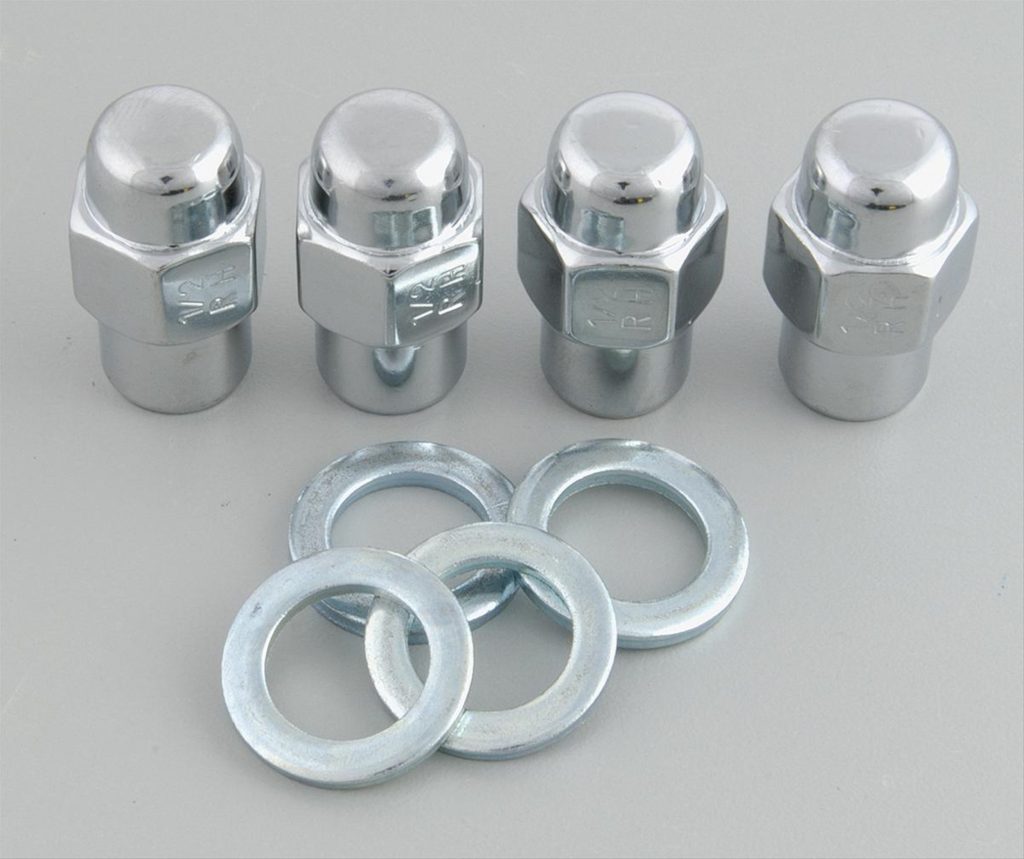
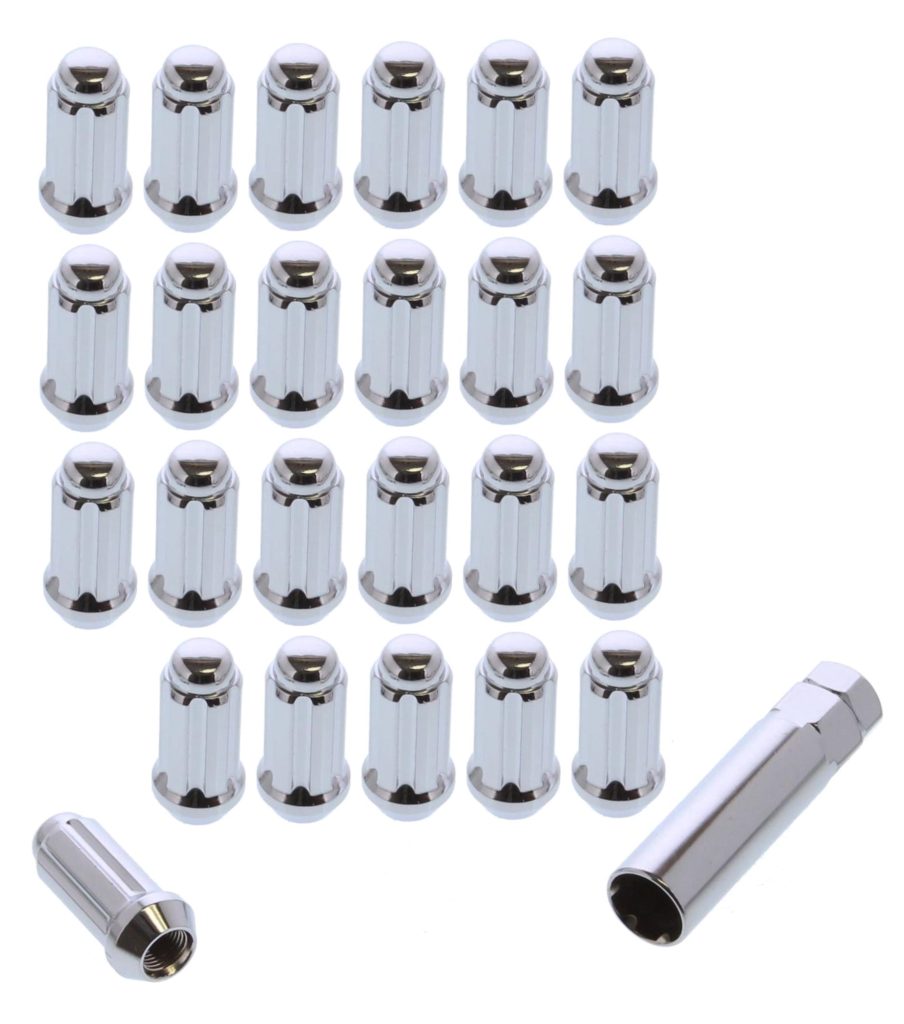
Spline drive lug nuts look cool, are theft-resistant, and don’t strip out as easily as standard hex lug nuts. (Image/Summit Racing)
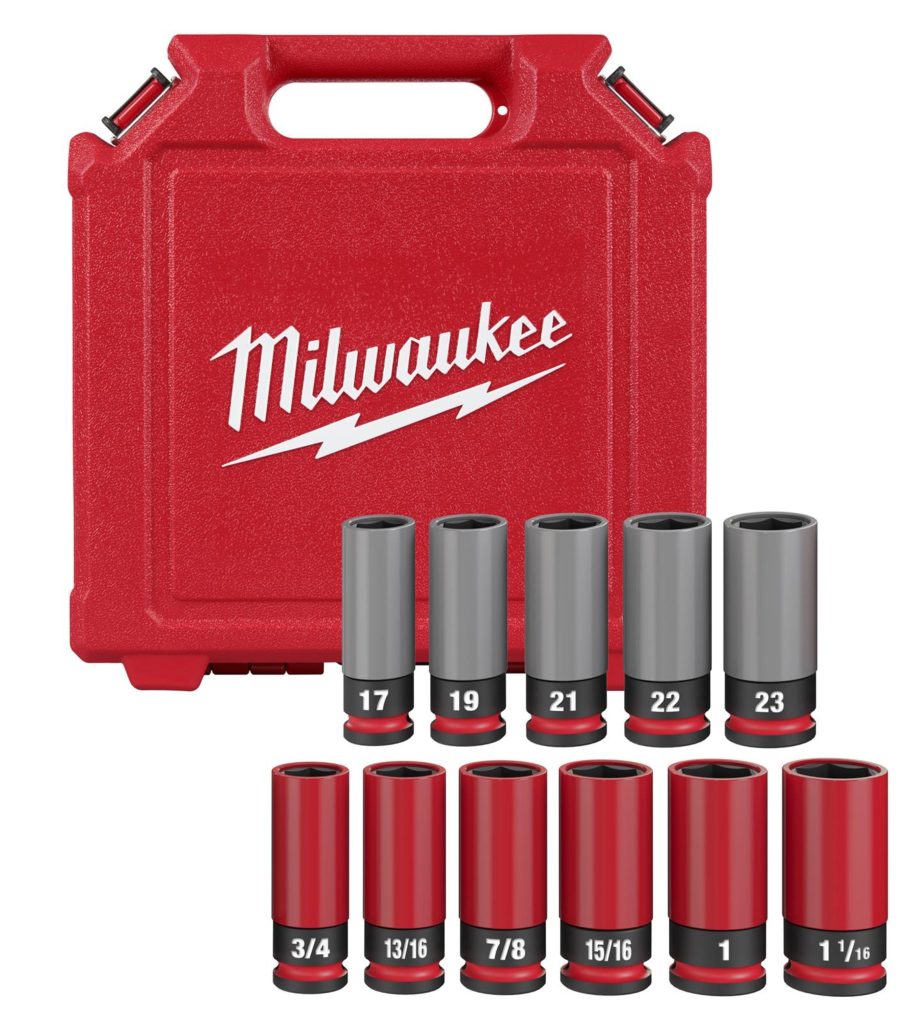
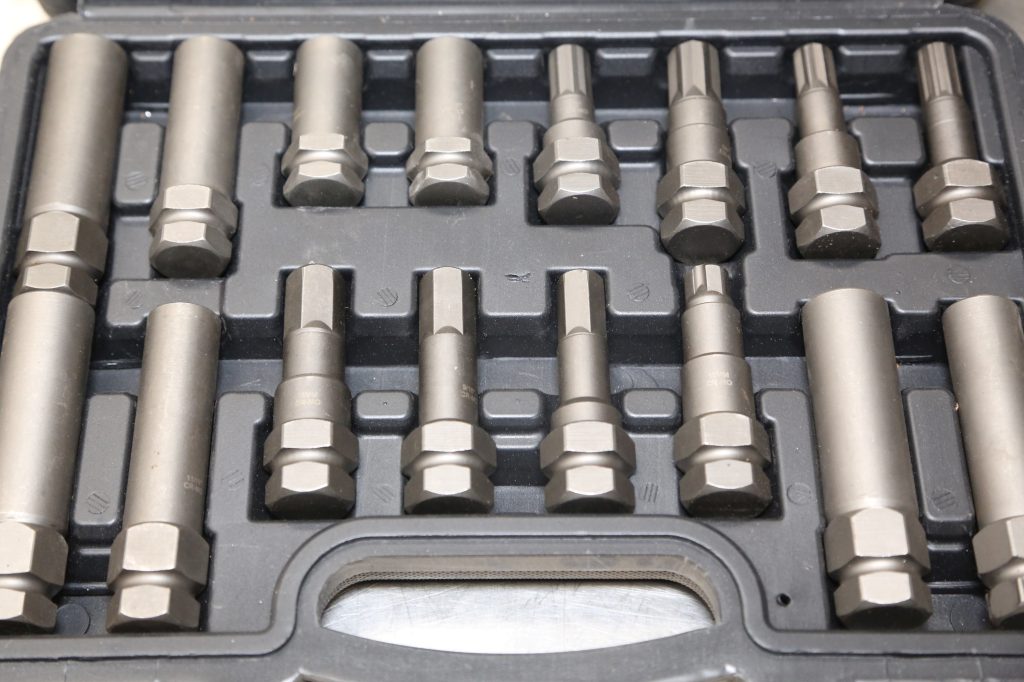
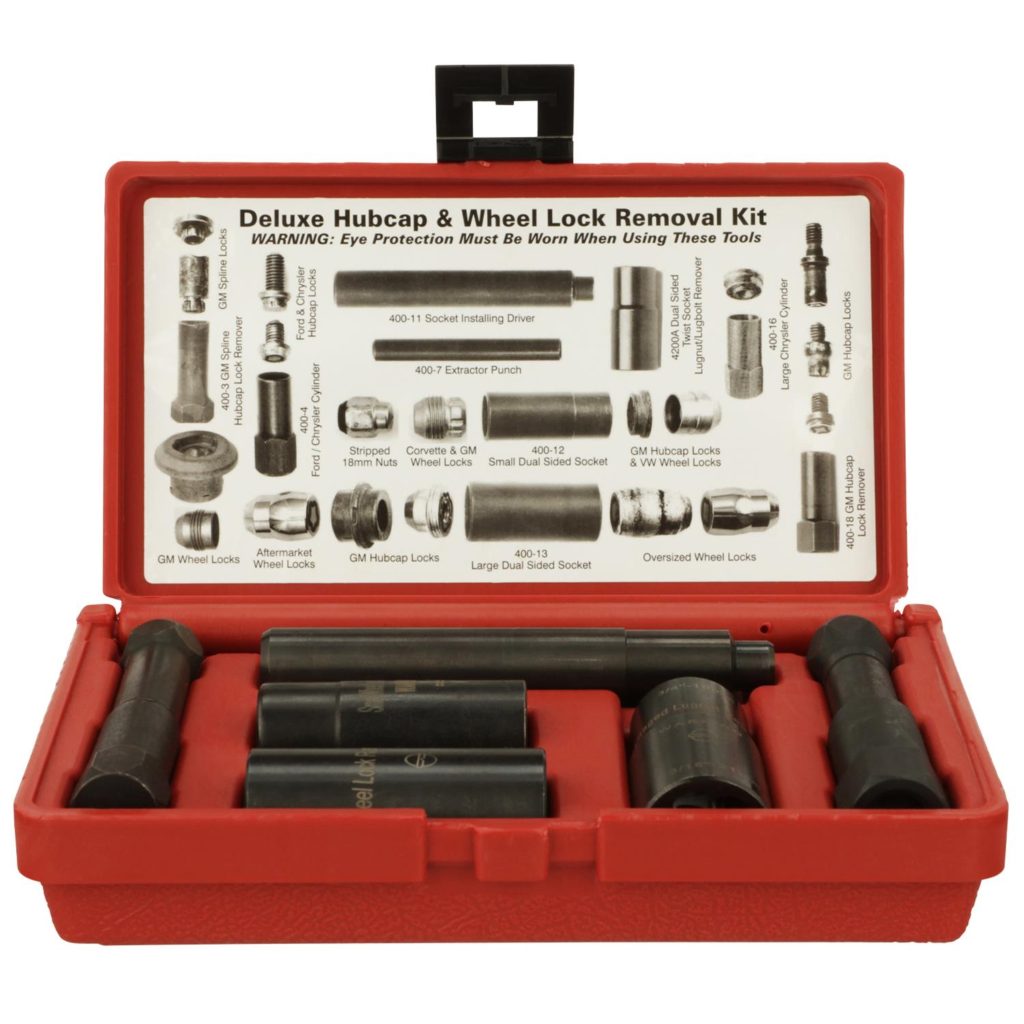

Comments